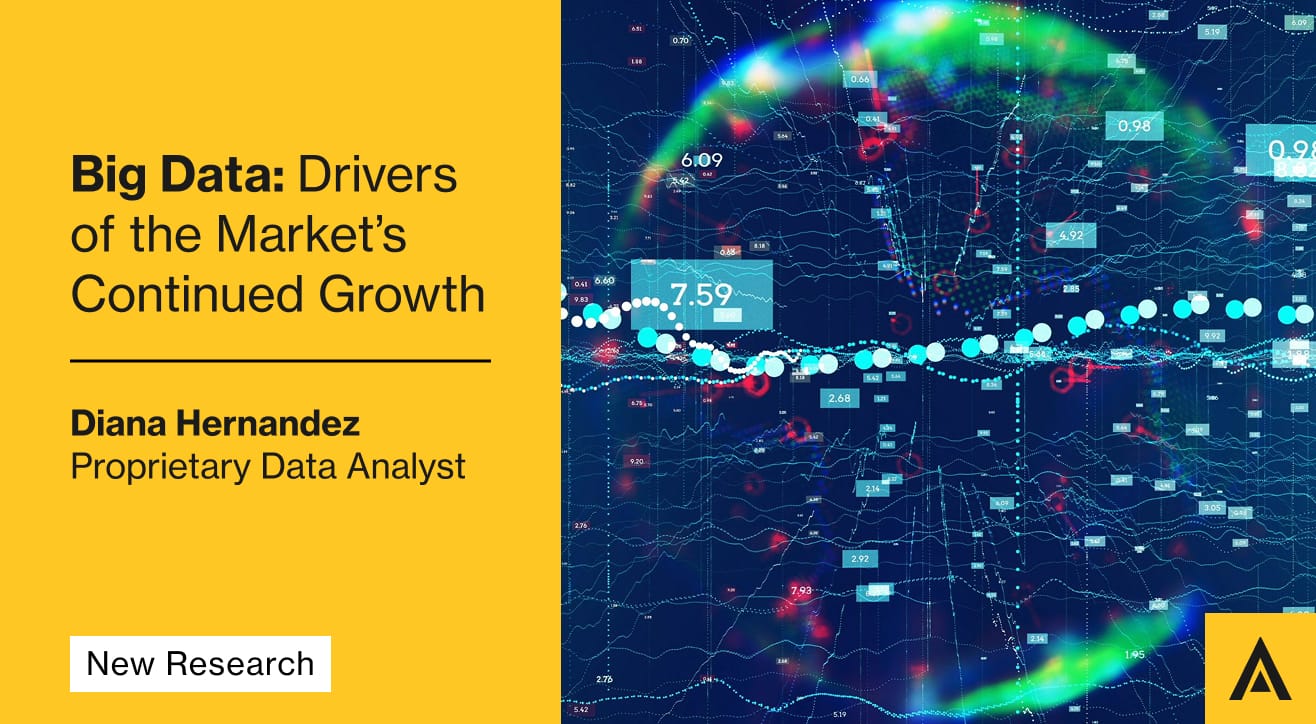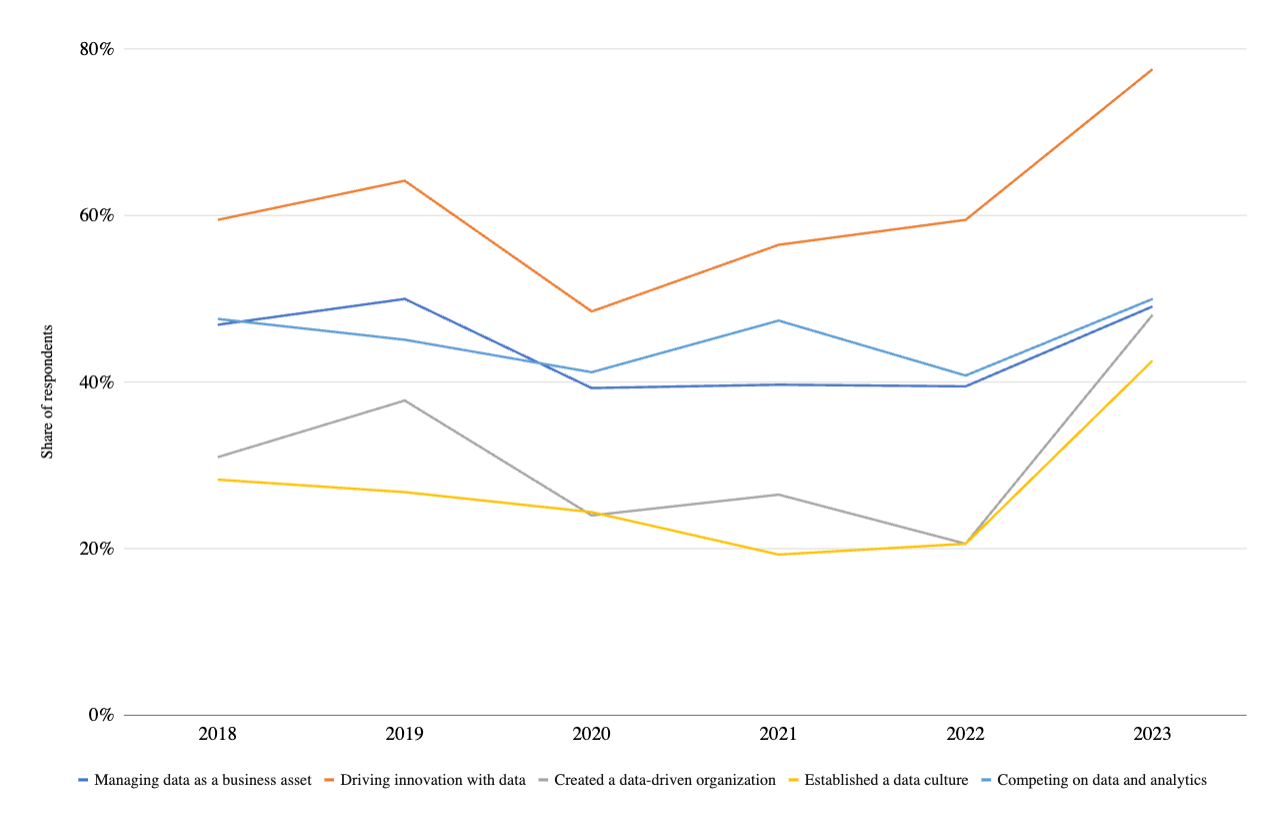Big Data Outlook: Drivers of the Market’s Continued Growth

The term big data refers to large and complex volumes of data generated at high velocity from the myriad of each company’s digital sources: internal and external interactions around the clock. With data coming in from traditional, databased sources as well as social media, cell phones, sensors, remote cameras and the list goes on, the demand for big data solutions continues to grow with increasing complexity.
Big data solutions play a huge role in collecting and storing massive amounts of information efficiently and deploying systems for organizing it in a way that allows for analysis and action. Artificial intelligence is crucial to the growth of this field, with data mining and machine learning playing a critical role in gaining actionable insights from large volumes of unstructured data. Big data is characterized by the five Vs:
- Volume: refers to immense datasets that traditional data processing tools and methods cannot easily manage or analyze. These datasets can range from terabytes to petabytes or even exabytes.
- Velocity: the data is generated at a high speed, which means that big data systems must be able to gather, process and analyze the data in real-time to extract meaningful insights.
- Variety: the data comes from different sources and formats, from text and numbers, to images, videos, and sensors data.
- Veracity: is extremely important ensuring the accuracy and reliability of the data, since then is going to be used to make decisions.
- Value: refers to the insights and benefits that can be obtained from analyzing big data.
Globally the big data market is forecasted to grow to nearly USD600 billion by 2033, with a CAGR of 12 to 13%.
Big Data = Big Insights
Decision-making based on big data is a field that has been fueled tremendously by cloud computing and artificial intelligence. Big data analytics can be broken down by impact type:
- descriptive and diagnostic analytics
- predictive analytics
- prescriptive analytics
Big data analytics are revolutionizing the way companies can use the information on-hand to make more accurate decisions, improve their product offerings and optimize their processes and operations. Widespread applications include forecasting market trends and rapid response to market and consumer changes in demand. On the other side of the business, big data analytics offer companies a deeper level of information in order to identify inefficiencies, reduce costs, and improve their productivity by analyzing data from production, logistics, and human resources.
Whether changes are focused on revenue or expense lines, with advanced, data-driven analysis tools companies are capable of identifying trends, simulating scenarios and evaluating potential impact of diverse choices before applying them.
In 2023, Statista researched the use of big data in Fortune 1000 companies from 2018 to 2023 through executive surveys. Executives in Data, Analytics and AI demonstrated through their responses that they drive innovation with data, and the inflection point for this was 2020. By 2023, 49% said they were managing data as a business asset.

Big Data Outlook
Companies are realizing the benefits of incorporating big data analytics within their organizations, and as a result boosting demand in the industries that support big data: storage, processing, data analytics products and services.
Market Data Forecast estimates the global big data market in 2025 at USD 225 billion, growing to USD 574 billion by 2033, a CAGR of 12.4% during that period.
Services held 42% of the global big data market share in 2024, given the need for customized solutions for specific business requirements. Top services needed are navigating the complexity of big data projects, migration to cloud-based analytics platforms and managed services for data integration.
Software solutions occupied second place, led by the increasing need for data-informed decision-making, predictive analytics, and real-time insights. And lastly hardware, driven by increasing use of IOT devices, edge computing technologies, high-performance computing systems, storage solutions and networking equipment.
Big Data Applications to Watch
Big data’s top vertical is Banking, financial services, and insurance (BFSI). Financial institutions rely on big data to deal with risk management, fraud detection, customer insights, and personalized financial services.
Healthcare and Retail are second to BFSI and are top users of big data for customer insights and cybersecurity. Fintech utilizes big data for both as well. Big data’s applications cross between sectors heavily, compounding the demand for it.
Regionally North America holds the greatest big data market share and is anticipated to continue driving the big data market growth in the future given its robust technological infrastructure, startup ecosystem, culture of innovation and early technology adoption, favorable government initiatives to promote digital transformation. The big players that operate there are Amazon (AWS), Google, Microsoft, IBM, and Oracle.
Europe follows North America in relevance within the global market and is expected to exhibit significant growth in the future attributed to use of big data analytics software in industry. China and India will increasingly play a leading role in the industries that support big data.
BITA's Proprietary Data Team Thematic Company Research
BITA's Proprietary Data Team tracks companies that offer products, solutions, and services in big data, with a focus on software development, storage solutions, management, analytics, and platforms. The team follows companies active in Artificial Intelligence and BITA’s AI Leaders Select Index tracks the performance of large publicly traded companies involved in at the forefront of AI technologies both from an application and infrastructure perspective.
BITA’s Proprietary Data Team uncovers and analyzes revenue streams of companies in areas of growth throughout all industries. BITA’s full line-up of universes-more than 90 universes-cover emerging industries and sub-industries in areas including but not limited to finance, technology, sustainability and social impact, food and health, leisure, sports, and culture, as well as controversial business involvement.
References
Difference Between Big Data and Data Science - GeeksforGeeks
Future of Jobs Report 2025: These are the fastest growing and declining jobs | World Economic Forum
Cómo Netflix, Amazon y otras empresas triunfan con Big Data: 5 casos de éxito
How Companies are Using Big Data - Big Data Analytics Examples
What Is Big Data, and Why Is it Important? - Intel
▷ La Revolución del Big Data: Impacto y Tendencias en el Mundo Actual | Actualizado marzo 2025
Big Data Market Size, Share, Trends & Analysis, 2033
GE’s Big Bet on Data and Analytics
General Electric (GE) in Manufacturing: A Case Study in Data Science-Driven Transformation
Doing Big Things with Big Data at PayPal
State of big data/AI adoption in organizations worldwide from 2018 to 2023

